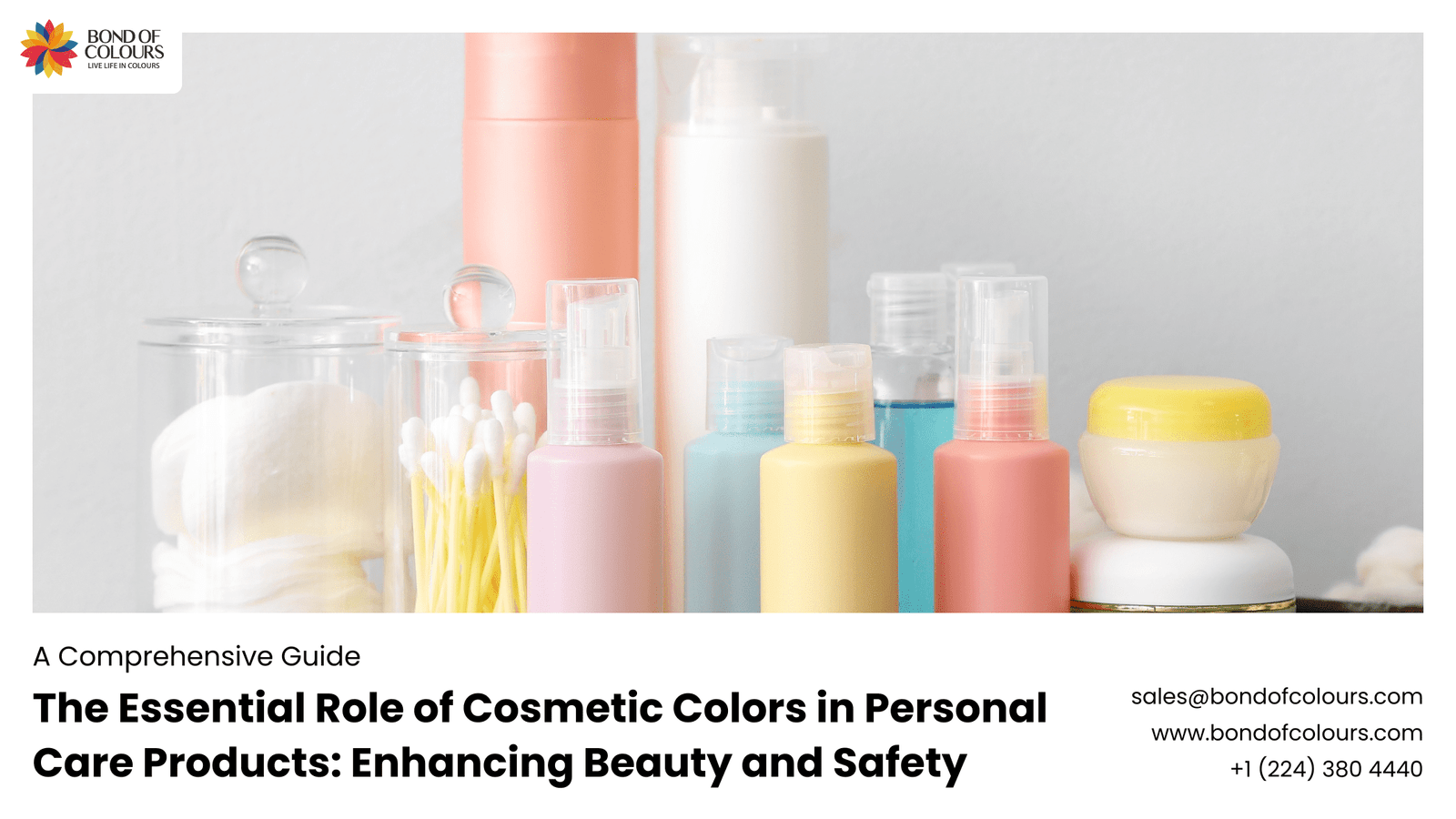Address
304 North Cardinal
St. Dorchester Center, MA 02124
Work Hours
Monday to Friday: 7AM - 7PM
Weekend: 10AM - 5PM
Address
304 North Cardinal
St. Dorchester Center, MA 02124
Work Hours
Monday to Friday: 7AM - 7PM
Weekend: 10AM - 5PM
Discover the essential role of cosmetic colors in personal care products. Learn how natural and synthetic colors enhance beauty, safety, and brand identity in skincare, hair care, and makeup products. Explore the benefits, innovations, and future trends in cosmetic colors.

Cosmetic colors have transformed the beauty industry, playing a vital role in the appeal and functionality of personal care products. From the early days of using crushed berries and minerals to modern-day synthetic hues, the evolution of cosmetic colors is fascinating. But why are these colors so essential, and how do they impact our choices and experiences with beauty products?
Plant-based colors are derived from a variety of natural sources such as fruits, vegetables, and flowers. These colors are often marketed as more environmentally friendly and less likely to cause allergic reactions.
Mineral colors are extracted from natural minerals found in the earth. They are valued for their stability and safety, often used in products like foundation and eyeshadow.
Organic dyes are synthesized from organic compounds and are known for their vibrant and diverse range of colors. They are commonly used in lipsticks, nail polishes, and hair dyes.
Inorganic pigments, such as titanium dioxide and iron oxides, are widely used due to their opacity and color consistency. These pigments are often found in products that require long-lasting color.
Cosmetic colors in skincare products are used not only for aesthetic appeal but also to indicate specific functions, such as green for anti-redness or purple for brightening.
From shampoos to hair dyes, colors play a significant role in enhancing the appearance and appeal of hair care products. Bright, bold colors attract younger consumers, while natural tones appeal to a more mature audience.
Makeup products rely heavily on colors to create desired looks and effects. Eyeshadows, lipsticks, blushes, and foundations are all designed with a wide palette of colors to suit diverse skin tones and preferences.
Colors make products visually appealing and can enhance the user experience. A well-chosen color can make a product stand out on the shelves and attract potential buyers.
Unique and distinctive colors can help a brand establish its identity and differentiate itself from competitors. Color can become synonymous with a brand’s image and reputation.
Colors can influence how consumers perceive the effectiveness and quality of a product. For instance, green is often associated with natural and organic products, while black might convey luxury and sophistication.
In the United States, the FDA regulates the use of colors in cosmetics to ensure they are safe for consumers. Only approved colors can be used in cosmetic products.
The European Union has stringent regulations regarding the use of cosmetic colors, with a focus on consumer safety and environmental impact.
Patch tests are conducted to check for allergic reactions or skin sensitivities to cosmetic colors. This ensures that products are safe for all skin types.
Toxicology studies assess the potential harmful effects of cosmetic colors on human health. These studies are essential for gaining regulatory approval and consumer trust.
With growing environmental concerns, biodegradable colors are becoming more popular. These colors break down naturally and reduce the environmental impact of cosmetic products.
UV-responsive colors change under different lighting conditions, offering innovative and exciting options for makeup and nail products.
Microencapsulation involves enclosing colors in tiny capsules that release the pigment over time. This technology can improve the longevity and vibrancy of cosmetic colors.
Despite rigorous testing, some consumers may still experience allergic reactions to certain colors. Brands must continually research and innovate to minimize these risks.
Maintaining color stability over time can be challenging. Exposure to light, air, and varying temperatures can cause colors to fade or change.
The use of animal-derived colors or testing on animals raises ethical issues. Many consumers now prefer cruelty-free and vegan products, pushing brands to find alternative solutions.
The demand for sustainable and eco-friendly products is driving the development of new cosmetic colors that are both safe and environmentally responsible.
Advancements in technology are making it possible to create personalized cosmetics tailored to individual preferences and skin types, including custom color formulations.
Lush Cosmetics is known for its commitment to natural and cruelty-free products. They use a variety of natural colors in their vibrant bath bombs and skincare products.
Fenty Beauty, founded by Rihanna, revolutionized the industry with its extensive range of foundation shades. The brand’s inclusive approach to color has set new standards in the market.
Consumer feedback plays a crucial role in the development and improvement of cosmetic colors. Brands that listen to their customers and adapt accordingly tend to be more successful.
Cosmetic colors are more than just a visual enhancement; they are integral to the identity, functionality, and appeal of personal care products. As the industry continues to evolve, innovations in color technology and a focus on safety and sustainability will shape the future of cosmetics. By understanding the role and impact of cosmetic colors, both consumers and brands can make informed choices that align with their values and preferences.